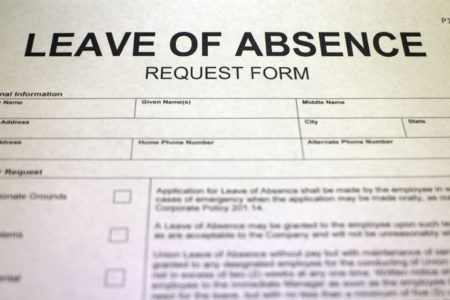
I confess: I’m a big Bruce Springsteen fan. One of his more obscure songs is “From Small Things (Big Things One Day Come).” The song itself has absolutely nothing to do with employment law, but I thought of the title when I read the Eleventh Circuit’s recent opinion in Jones v. Aaron’s Inc., No. 17-14298, 2018 WL 4203459 (Sep. 4, 2018). The Jones case demonstrates that small errors in dealing with employees can have big consequences for employers.
Rosana Jones was a Customer Service Representative for Aaron’s, Inc. She injured her back and took FMLA leave from June 2, 2013 to June 17, 2013. Prior to her injury and FMLA leave, Jones worked 40 hours per week, but upon return her hours were reduced to 32 hours per week. After two weeks working that reduced schedule, Jones complained to her supervisor, who returned her to 40 hours per week. But, Aaron’s did not pay Jones for the 16 hours of missed work.
In October 2013, a new manager was assigned to Ms. Jones’s store, and she clearly had personality conflicts with that manager. Those conflicts culminated in an event where Jones told the manager: “Christ, just be a man. Tell me what your problem is with me.” Based upon that statement and other conflicts, Aaron’s terminated Ms. Jones’s employment.
Ms. Jones sued Aaron’s under the Americans with Disabilities Act and the Family and Medical Leave Act. She focused on: (1) the termination of her employment; and, (2) the loss of 16 work hours when she returned from FMLA leave. A trial court dismissed both of those claims, but the Eleventh Circuit entered a limited reversal.
The Eleventh Circuit found that termination was appropriate, but reversed on the 16-hour issue. Aaron’s claimed that Ms. Jones requested a reduction of hours when she returned from FMLA leave, but Ms. Jones denied any such request. Indeed, there was no documentation of any kind indicating such a request. Instead, viewing the evidence most favorably for Ms. Jones, it appeared that Aaron’s management implemented the reduction of hours.
After Ms. Jones filed her lawsuit, Aaron’s paid her for the sixteen hours. While the dollar amount is not mentioned in the Jones opinion, I suspect that the payment was only a few hundred dollars — at most. After making that payment, Aaron’s essentially argued “no harm, no foul.” But, the Eleventh Circuit was not persuaded: “Employers cannot escape liability for adverse employment decisions by making retroactive payments to aggrieved employees. …. Moreover, Aaron’s late payment to Jones does not alter the fact that Jones was denied payment because of an FMLA violation, nor does it erase the injury caused by this alleged FMLA violation — specifically the lost value and use of the funds in the three years before she received payment.”
For Aaron’s, the practical impact of its small error will probably result in a much larger financial result. The Eleventh Circuit’s opinion clears the way for a jury trial on the FMLA violation. Most likely, the parties will settle that claim before trial. And, the primary beneficiary of any settlement will be Ms. Jones’s lawyers. The value of Ms. Jones’s FMLA claim for 16 hours is very low. But, her lawyers will certainly claim that they are entitled to thousands of dollars of in attorneys’ fees for successfully pursuing the claim. As a result, an error of several hundred dollars by Aaron’s will probably cost them thousands of dollars to resolve.
For employers, the practical lesson from Jones is: be willing to admit when you’ve made a mistake. If Aaron’s paid Ms. Jones before she filed suit, or if Aaron’s paid her for “the lost value and use of the funds,” the result of the case might have been much different. By waiting to correct a violation, however, Aaron’s small error potentially resulted in much larger financial consequence.






